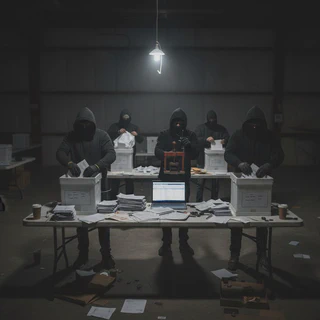Understanding Voter Fraud Misinformation Videos on YouTube during Taiwan 2024 Election
 Image created by Nano Banana
Image created by Nano BananaAbstract
This paper presents a mixed-method analysis of voter fraud misinformation on YouTube during Taiwan’s 2024 election. Using a computational pipeline and manual coding, we identify videos discussing ballot-related fraud claims. Our findings show that Democratic Progressive Party (DPP)-aligned accounts produced the most such content, which drew more comments but fewer likes than other videos. Case studies reveal distinct strategies, some media outlets and grassroots accounts promoted fraud claims, while DPP-linked channels often refuted them. This study sheds light on the dynamics of multi-modal voter fraud misinformation in Taiwan and informs global efforts to mitigate its spread.
Type
Publication
In Proc. ACM Hum.-Comput. Interact. 9, 7, Article CSCW516
🎉 Our paper wins the Impact Recognition Award in CSCW 2025 ! 🎉
This paper proposes a human-in-the-loop pipeline to analyze 5,000+ YouTube videos.
- Including data collection, identification of voter-fraud videos, multi-modal and statistical analysis.
- Applied a human-in-the-loop pipeline (transcripts and misinformation typology coding).
The analysis yields several findings;
- Video accounts aligned with the Democratic Progressive Party (DPP) produce the highest number of videos discussing voter fraud misinformation.
- Videos discussing such misinformation tend to receive more comments but fewer likes compared to videos without this content (Engagement metrics comparison).
- Voter-fraud Videos associated with the DPP are quite distinct from those linked to the Kuomintang (KMT) or Taiwan People’s Party (TPP), with unique characteristics that may be further revealed through their audio and video features (Multi-modal analysis and comparison of videos across publisher parties).
- Voter-fraud videos by traditional media accounts tend to exhibit a more standardized tempo, higher brightness, greater visual complexity (entropy), and higher face presence compared to grassroots accounts (Multi-modal analysis and comparison of videos across publisher types).
- Case studies highlight several key divergences compared with voter fraud misinformation in the 2020 U.S. presidential election, particularly in terms of narrative strategies.
Check the additional blog: [Medium Blog]